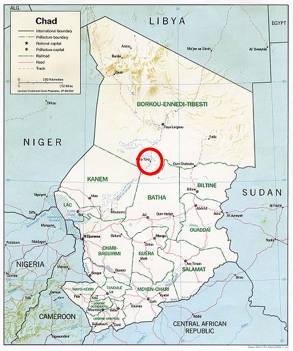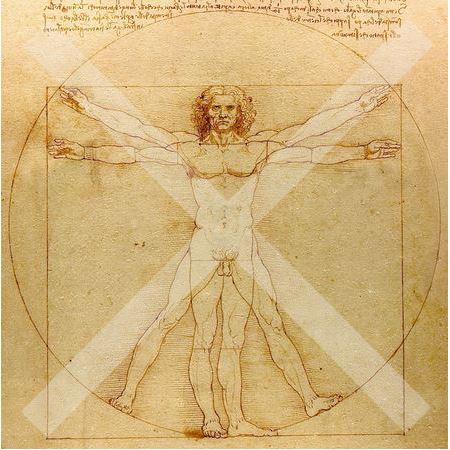Australopithecus bahrelghazali
Human evolution
Online Biology Dictionary
|
|
EUGENE M. MCCARTHY, PHD
| < | Timeline |
Works Cited | > |

|
|
Michel Brunet (Image: Ludovic Péron) |
 |
| A. bahrelghazali was found in Chad near Koro Toro, circled in red. |
For Australopithecus bahrelghazali the name is long, but the facts are short. Certainly, it wins the grand prize as Most Obscure Australopithecine. Based on a single mandible fragment containing one incisor, two canines, and four premolars, the validity of A. bahrelghazali, as a type of hominid distinct from the contemporary and much better characterized Australopithecus afarensis, is still controversial — particularly given the fact that its discoverer, Michel Brunet, keeps it locked away from colleagues' view.
The specimen, which dates to about 3.6 mya, first came to light in 1993 in the Bahr el Ghazal river valley near the town of Koro Toro in the southern part of Chad's Borkou-Ennedi-Tibesti region (see enlarged map) some 2,500 kilometers from the closest site where australopithecines had earlier been found. It is formally known as specimen KT-12/H1, but is more widely known by its friendlier nickname "Abel".
Of course, few specific conclusions can be reached on the basis of a single sequestered and fragmentary chunk of a jaw. For example, the brain size of the creature that once chewed with these teeth is unknown, since its cranial-capacity cannot even be estimated from the material. It can, however, be safely assumed, given the early date of the specimen, that there was no use of fire or shaped stone tools — the oldest known stone tools date to about 2.5 mya (Semaw et al. 1997, Semaw 2000).
KT-12/H1 has been important primarily in indicating a new region where early hominid remains are likely to be found. And indeed, Brunet and his colleagues have already found the far more ancient Sahelanthropus tchadensis at a nearby site.
Perhaps we are not from the apes alone?

|
|
Pronunciation: AW-strail-ō-PITH-ə-kəs bar-el-gə-ZAWL-ee Etymology: Since the type specimen of Australopithecus bahrelghazali was found in the Bahr el Ghazal river valley, its name was created by adding the Latin genitive ending -i to bahrelghazal, yielding bahrelghazali, meaning "of the Bahr el Ghazal". Australopithecus is constructed from the Latin prefix australo- and the Greek suffix -pithecus. The name means "southern ape of the Bahr el Ghazal". |
Interesting facts about other members of genus Homo:
Australopithecus bahrelghazali >>
Australopithecus bahrelghazali
© Macroevolution.net
Most shared on Macroevolution.net:
Human Origins: Are we hybrids?
On the Origins of New Forms of Life
Mammalian Hybrids
Cat-rabbit Hybrids: Fact or fiction?
Famous Biologists
Dog-cow Hybrids
Georges Cuvier: A Biography
Prothero: A Rebuttal
Branches of Biology
Dog-fox Hybrids